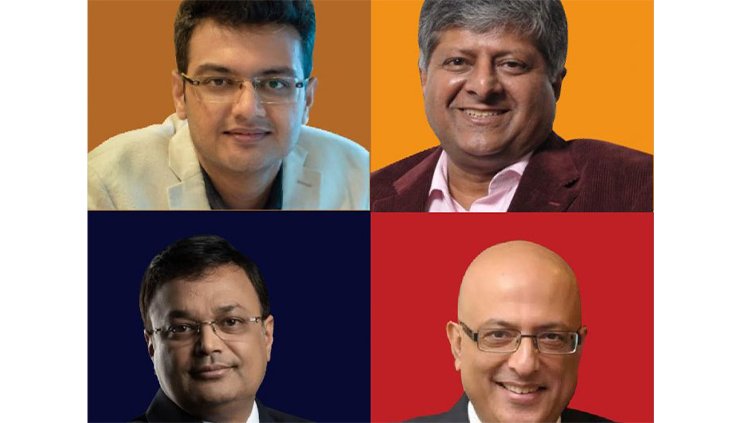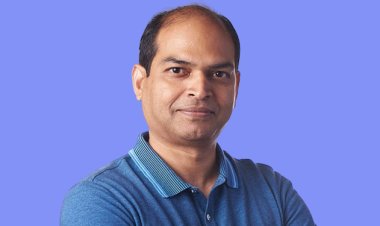Governance Now hosts a panel discussion about modern advertising practices.

The moment has come for digital media to translate impressions into GRPs (Gross Rating Points) in order to obtain measurement figures. An advertiser has a right to be aware of the content that contains their advertisement.
These topics were discussed by prominent members of the advertising business, including Shashi Sinha, CEO of IPG Mediabrands India, Vikram Sakhuja, group CEO of Madison Media & OOH, and Avinash Pandey, CEO of ABP Network, at the Governance Now Roundtable on Current Trends in Advertising. Kailashnath Adhikari, MD of Governance Now, served as the session's moderator.
When asked whether geo-targeted advertising should be used in digital media, Sinha responded that, in contrast to TV, print, and outdoor media, digital is opaque and dependent on search, discovery, and performance-based marketing.
Pandey added that the issue affected the entire eco system. In the digital world, you can only choose a specific age range or region, not a medium.
Sinha agreed, saying that this was risky for both corporations and democracy.
Sakhuja contends that the fundamentals of media learned through media planning should be applied to digital. "In digital, the sole unit of measurement we use is impressions, which are a subset of GRPs. It is not being converted into GRPs, which takes two minutes. Reach is only described in percentages rather than in absolute numbers, which will aid in addressing both the digital and video audiences.
As digital video has a considerably longer tail than television, it is exceedingly challenging to increase reach at high frequencies. As an advertiser, I should have a full right to know whatever article contains my ad, he argued.
In response to a question about whether the majority of digital ad exchanges would still take place in Google and Meta, Sinha stated that the industry would eventually open up. "When MSMEs increase, growth will occur and monopolies will automatically fall."
Sakhuja said that the present focus in digital marketing was on performance at the expense of branding. Digital will continue to expand as long as branding is prioritized, he said. Additionally, he urged combined TV and digital marketing.
"We forecasted roughly Rs 30,000 crore for TV advertising and Rs 10,000 crore for video advertising out of total video. Digital now accounts for 25% of all video consumption. Also, an integrated setup will be beneficial for both and fascinating to observe. The entire digital eco-system should be studied, according to Sakhuja, and an industry body should push audience measurement to make it more democratic.
When asked if people still prefer to watch news on TV, Pandey responded that social media sites like Twitter and Facebook enable news and encourage more people to watch it on TV. The country is selling an increasing number of TVs. People are increasingly watching live news, which is changing the signal delivery medium for news consumption.
Media owners, according to Pandey, should create captivating content that acknowledges the role of search media in bringing viewers to TV. He noted that "more and more people are watching television and news on television, which is not reflected in data." Pandey cited no state government or political party as an example that did not make significant television investment. "They often communicate with their voters and are aware of their consumption patterns."
It is time for newspapers to make their editors into heroes, Sakhuja said, adding that the legitimacy and significance of news anchors keep viewers' attention.
On the topic of significant layoffs in e-commerce businesses and how the industry affects advertising, Sinha stated that the impact of global headwinds may last a little longer and slow the inflow of capital.
Sakhuja disagreed, stating that they anticipated continued funding.
Pandey claims that many media companies that were involved in spreadsheet-based business (alluding to e-commerce firms) either no longer exist or had to sell their firms for far less money than they would have otherwise been able to. "Such windfalls have occurred every two to three years. We are fortunate to have a reliable mechanism for receiving payments on schedule with IBF.
He added that media proprietors should collect money in advance if they believe that business is not going well.
According to the experts, India is doing well despite the general situation around the world. If consumer discretionary spending increases, with the exception of a few product lines, double-digit growth can be predicted for the CPG (consumer packaged goods) category across all categories, particularly food.
According to Pandey, development is anticipated in the FMCG, telecom, media, and advertising sectors this year, as well as modest growth in the vehicle, two-wheeler, and compact car sectors, all of which require advertising. According to him, more foreign investment in the real manufacturing sector will increase advertising.
Additionally, Sinha highlighted that since brands view television and print as reliable platforms that significantly enhance the value of advertising, linked TV will develop and maybe reach a wide audience.

 Sumit Rawat
Sumit Rawat 










